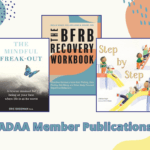
The stigma associated with individuals suffering from mental health conditions, particularly depression, is extensively documented in research (Wood et al., 2014) and remains alarmingly prevalent in society (refer to Pattie’s Mental Elf blog for insights on the widespread nature of self-stigma in cases of depression). Despite its significance, the complex interaction between stigma and depression has received limited exploration, even though understanding this relationship is crucial for informing effective treatment strategies.
Essentially, stigma represents the negative judgment placed on an individual or a group due to certain characteristics or identity traits that society deems undesirable. Moreover, stigma is multifaceted and exists in various forms, including:
- Anticipated stigma (i.e., the expectation of mistreatment by others based on the identity in question)
- Enacted stigma (i.e., actual experiences of discrimination linked to specific traits or identities)
- Internalised or self-stigma (i.e., the internal perception of oneself through the lens of societal views; Fox et al., 2018).
Additionally, identities that are subject to stigma can be either visible, such as ethnicity, or concealable, like certain mental health conditions (Quinn et al., 2020). Notably, certain mental health issues, such as body-focused repetitive behaviors (BFRBs), can also manifest visible symptoms. Individuals with BFRBs may experience noticeable hair loss or skin lesions (Mathew et al., 2021), which can influence their interactions with others and their mental health.
To delve deeper into the dynamics between anticipated stigma, internalised stigma, and depression, O’Donnell and Foran (2024) conducted a systematic review aiming to:
- Determine if anticipated and/or internalised stigma can serve as predictors of depression levels
- Evaluate the quality of evidence regarding a potential causal link between stigma and depression.

Self-stigma among individuals with depression is alarmingly widespread globally. Investigating whether individuals with stigmatised identities are at a higher risk of developing depression is vital for enhancing preventative treatment strategies.
Research Methodology for Understanding Stigma and Depression
Adhering to the PRISMA guidelines, the researchers conducted a thorough search across four online databases, including a grey literature database, to identify studies that met the following criteria:
- Collected quantitative data
- Utilised valid and reliable measures for stigma and depression
- Involved participants aged 18 and older with a stigmatised identity beyond depression
- Included depression as a measurable outcome
- Were available in English
The focus was on studies that explicitly considered stigma as a predictor and depression as an outcome. The researchers aimed to investigate the direct correlation between stigma and depression, intentionally excluding studies that reported only correlational results or presented mediation models instead of regression analyses.
The initial literature search yielded over 2000 potential studies, prompting a staged screening process. The first 100 results were piloted by two independent reviewers, after which each researcher screened the remaining titles and abstracts independently, resolving any discrepancies through discussion. The National Institutes of Health (NIH) quality assessment tool was employed to evaluate observational cohort and cross-sectional studies, with researchers independently categorising studies as “good,” “satisfactory,” or “poor” and discussing any inconsistencies.
Key Findings from the Systematic Review
Overview of Study Characteristics
A total of eighty-three studies were included in the systematic review. The majority of these studies were cross-sectional (n = 73), and the second most prevalent design was longitudinal (n = 10). Collectively, these studies encompassed 34,705 participants. Most of the research conducted was centered in the United States (n = 39), with additional studies from Asia (n = 22), Africa (n = 9), and Europe (n = 6).
Out of the eighty-three studies, five focused solely on anticipated stigma, while sixty-one assessed internalised stigma, with an additional nine studies categorised under ‘self-stigma’. Eight of the studies examined both anticipated and internalised stigma.
The comprehensive analysis of these 83 studies revealed a diverse range of 21 different stigmatised identities, which were classified into five distinct subcategories:
- Sexual and gender minorities
- HIV/AIDS
- Illness or disability-related (excluding HIV)
- Weight-related stigma
- Other identities
Significant Findings on Stigma and Depression
A total of sixty studies provided direct evidence supporting a positive relationship between internalised stigma and/or anticipated stigma and depression levels. Thirteen studies showed a positive relationship with certain qualifications (i.e., the relationship was not significant when controlling for other variables), nine studies contradicted the expected link, and one study showed that internalised stigma was associated with lower depression levels. Overall, 12% of studies did not find support for the anticipated relationship.
Findings Categorised by Stigmatised Identity
- Approximately 33.7% of the studies focused on the connection between stigma related to sexual or gender minority status and depression, with nearly half (53.6%) indicating a positive correlation between anticipated and/or internalised stigma and the likelihood of experiencing depression.
- 32.5% of the studies examined the relationship between HIV/AIDS stigma and depression, with 23 out of 27 studies (85.2%) identifying a significant positive link between anticipated and/or internalised stigma and depressive symptoms.
- 9.6% of the studies focused on the relationship between weight stigma and depression, with all studies in this category finding a substantial positive link between anticipated and/or internalised stigma and depressive symptoms.
- 15.7% studied the connection between illness or disability-related stigma and depression, primarily focusing on COVID-19 and cancer. This category lacked sufficient cohesion for robust comparative analysis due to the variety of conditions studied.
- Additionally, 8.9% of the included studies fell under the “other” category, lacking enough shared characteristics to draw definitive conclusions.
Findings Categorised by Study Design
Among the 73 cross-sectional studies reviewed, the majority (n = 56; 76.7%) provided evidence supporting a significant positive correlation between internalised and/or anticipated stigma and depression.
In contrast, of the 10 longitudinal studies assessed, only four (40%) demonstrated a positive correlation between internalised stigma and increased depressive symptoms over time.

Of the 83 studies included in this systematic review, 60 found a direct positive link between anticipated and/or internalized stigma and symptoms of depression.
Overall Insights and Recommendations from the Systematic Review
The systematic review conducted by O’Donnell and Foran (2024) concluded that anticipated and/or internalised stigma serves as a significant predictor of depression. The evidence across various samples indicated a substantial and positive correlation between internalised and/or anticipated stigma and depression levels, irrespective of factors such as age, gender identity, education, sexual orientation, and enacted stigma. However, the strength of this relationship varied based on the type of stigmatised identity. Given the notable differences in results based on study design, with cross-sectional studies showing a more consistent correlation compared to longitudinal studies, the authors advocate for further investigation into the long-term effects of stigma.

While cross-sectional studies widely support stigma as a predictor of depression, longitudinal studies show mixed results, emphasizing the necessity for further research on the stigma-depression relationship.
Strengths and Limitations of the Systematic Review
Strengths of the Review
- Previous research has primarily focused on the internalised and enacted stigma faced by individuals with depression. This review contributes significantly by illustrating how pre-existing stigma can influence one’s experiences of depression, enhancing our understanding of how marginalised populations navigate this mental health challenge uniquely.
- The methodological rigor of this review is underscored by the authors’ adherence to the NIH quality assessment tool for observational cohort and cross-sectional studies, which ensured a thorough quality evaluation of each included study. The studies were rated as “good” or “fair,” indicating the reliability of the findings.
- Most studies included in the review employed well-validated measures for internalised stigma, anticipated stigma, and depression, which have been consistently applied across various contexts to yield reliable results measuring the intended constructs.
Limitations of the Review
- One methodological limitation is the use of a systematic review rather than a meta-analysis, which would have provided a more precise estimation of effect sizes and enabled a quantitative evaluation of the data. The rationale behind not conducting a meta-analysis remains unclear.
- The authors did not report kappa values to indicate the inter-rater reliability between the two reviewers. Therefore, it remains unknown whether there was substantial reliability among the screeners, which would enhance confidence in the findings.
- The authors did not clarify how they obtained the identified records, and 19 reports were inaccessible due to unsuccessful requests for access; however, they did not specify their methods for attempting to retrieve these reports. These documents could contain crucial information relevant to the systematic review, potentially affecting its validity and reliability.
- A notable limitation is that the majority of studies included in the review were cross-sectional, which restricts the authors from making claims about the temporal impact of stigma on depression. Understanding this relationship over time is vital to establishing causality, thereby guiding targeted interventions.
- There were discrepancies between findings from longitudinal studies and those from cross-sectional studies, indicating a weaker relationship between stigma and depression in longitudinal investigations. However, since the number of longitudinal studies was significantly smaller than that of cross-sectional studies, drawing definitive conclusions about the significance of this difference is challenging. Future research should strive for a more balanced sample.

Despite utilising well-validated measures, the review faced limitations including a lack of longitudinal studies and a lack of clarity regarding the absence of a meta-analysis.
Implications for Mental Health Practice
The findings of this review hold significant implications for mental health conditions extending beyond major depressive disorder. As highlighted by Thornicroft et al. (2016) in their Lancet Commission, individuals facing mental health challenges endure a dual burden, grappling with both the symptoms of their disorders and the pervasive stigma surrounding them. The latter often exacerbates their distress, sometimes perceived as more debilitating than the disorder itself. Many therapeutic approaches remain focused primarily on alleviating the core symptoms of the disorder while neglecting the chronic impact of stigma and shame. This neglect is especially pronounced in lesser-known conditions, where low awareness contributes to heightened stigma.
For instance, body-focused repetitive behaviors (BFRBs), which include conditions like trichotillomania (hair pulling) and dermatillomania (skin-picking), are often accompanied by significant stigma and associated depressive symptoms (Mathew et al., 2021). Unfortunately, these conditions are so stigmatized that many individuals seeking help from healthcare professionals discover that the practitioners have minimal understanding of their conditions (Tucker et al., 2011; Woods et al., 2006).
Moreover, while mental health conditions may generally be perceived as concealable stigmas, individuals with BFRBs may experience self-stigma akin to those facing visible stigmas, such as weight stigma. This self-stigma can hinder treatment-seeking behaviors, and individuals with visible stigmas may be more susceptible to experiencing internalised and anticipated stigma, resulting in chronic shame that could further contribute to depression. These insights can guide destigmatisation initiatives for clinicians and researchers, aimed at enhancing clinical outcomes for individuals with BFRBs and other mental health conditions that exhibit visible elements.
For clinicians, it is essential to:
- Address stigma at the initiation of treatment. Self-stigma can impede treatment-seeking behaviors and diminish treatment adherence (Kamaradova et al., 2016). Therefore, clinicians should inquire during assessments about aspects of clients’ identities that may be subject to stigma, proactively identifying these potential barriers to care.
- Enhance clients’ understanding of the psychological effects associated with possessing a stigmatised identity, while also identifying protective factors that may mitigate these effects.
For researchers, it is vital to:
- Investigate the relationship between internalised and anticipated stigma in under-explored areas such as BFRBs. This could encompass conditions like excoriation disorder and trichotillomania as outcome measures.
- Employ both quantitative and qualitative methodologies to examine the development, persistence, and impact of self-stigma among individuals with BFRBs.
- Create targeted destigmatisation interventions that address the needs of individuals with visible stigmas, including BFRBs.

Insights garnered from this review can inform destigmatisation efforts to enhance treatment outcomes for individuals with various forms of visible stigma, including body-focused repetitive behaviors (BFRBs).
Declaration of Interests
No conflicts of interest declared.
References and Links
Primary Research Article
O’Donnell, A. T., & Foran, A.-M. (2024). The connection between anticipated and internalised stigma and depression: A systematic review. Social Science & Medicine, 349, 116869–116869.
Additional References
Fox, A. B., Earnshaw, V. A., Taverna, E. C., & Vogt, D. (2018). Conceptualising and measuring mental illness stigma: The mental illness stigma framework and critical review of measures. Stigma and Health, 3(4), 348–376.
Gonsalves, P. (2023). Self-stigma for people with depression: systematic review presents global prevalence data, risk factors and protective factors. The Mental Elf.
Kamaradova, D., Latalova, K., Prasko, J., Kubinek, R., Vrbova, K., Mainerova, B., … & Tichackova, A. (2016). Connection between self-stigma, adherence to treatment, and discontinuation of medication. Patient Preference and Adherence, 1289-1298.
Mathew, A. S., Harvey, A. M., & Lee, H.-J. (2021). Development of the social concerns in individuals with body-focused repetitive behaviors (SCIB) scale. Journal of Psychiatric Research, 135, 218–229.
Quinn, D. M., Camacho, G., Pan-Weisz, B., & Williams, M. K. (2019). Visible and concealable stigmatized identities and mental health: Experiences of racial discrimination and anticipated stigma. Stigma and Health.
Thornicroft, G., Mehta, N., Clement, S., Evans-Lacko, S., Doherty, M., Rose, D., … & Henderson, C. (2016). Evidence for effective interventions to reduce mental-health-related stigma and discrimination. The Lancet, 387(10023), 1123-1132.
Tucker, B. T., Woods, D. W., Flessner, C. A., Franklin, S. A., & Franklin, M. E. (2011). The Skin Picking Impact Project: phenomenology, interference, and treatment utilization of pathological skin picking in a population-based sample. Journal of Anxiety Disorders, 25(1), 88-95.
Wood, L., Birtel, M., Alsawy, S., Pyle, M., & Morrison, A. (2014). Public perceptions of stigma towards people with schizophrenia, depression, and anxiety. Psychiatry Research, 220(1-2), 604–608.
Woods, D. W., Flessner, C. A., Franklin, M. E., Keuthen, N. J., Goodwin, R. D., Stein, D. J., & Walther, M. R. (2006). The Trichotillomania Impact Project (TIP): exploring phenomenology, functional impairment, and treatment utilization. Journal of Clinical Psychiatry, 67(12), 1877.
Photo Credits
Ann Miller is a certified mental health coach and wellness writer with a strong background in psychology and emotional resilience. With over a decade of experience in helping individuals manage stress, anxiety, and burnout, Ann specializes in making complex mental health topics accessible and empowering.
She holds a Master's degree in Clinical Psychology and has worked with both individual clients and organizations to promote emotional well-being and work-life balance. Through her writing, Ann aims to break the stigma surrounding mental health and offer practical, compassionate guidance for everyday challenges.
When she's not writing or consulting, Ann enjoys early morning yoga, quiet reading time, and exploring nature trails with her dog. Her personal philosophy: "Mental health is not a luxury — it’s a foundation for everything we do."













